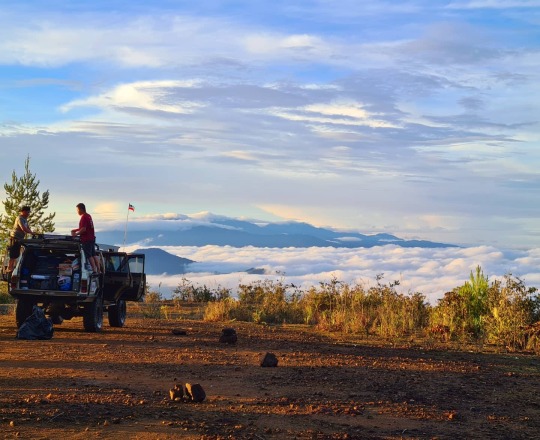#sabah land below the wind
Explore tagged Tumblr posts
Text

����Sabah, Land Below The Wind💨
🌾 Sabah, Negeri di Bawah Bayu 💨
🌾 风下之乡,沙巴 💨
This is the 2nd out of my 3 zine pieces for the NSR Malaysian Zine!
Check out the zine here: https://nsrmalaysiazine.carrd.co/
Image description under the cut! :D
I wanted to make an entire piece dedicated to my hometown Sabah, initially, I plan to go for the poker card style since ppl like to play cards during CNY but I can't work that out so it ended up being styled like a tarot card instead :P
As a Sino-Kadazan that grew up in West Malaysia, I only got to learn Chinese culture and missed the Kadazan part of my culture entirely. So now I'm trying to go back to my Kadazan roots by learning the language and culture after I graduated high school because by that time I will be able to go back to Sabah for a long while and slowly rediscover the other half of my missing culture >:)
I really want to make a piece to represent a part of what I personally know about Sabah and its culture since East Malaysia is often overshadowed by a lot of other stuff, and I decided to dedicate an entire piece just for Sabah, and this is why this piece means a lot to me.
In this piece, you can see Mount Kinabalu, the Sabah State Museum, The Tip of Borneo, Rafflesia, Nepenthes rajah, and the Kadazan culture with the patterns and also Mayday doing the Sumazau dance.
#come to Sabah Sabah very cool#we got nice view and seafood#took me a while to figure out a rly nice composition and in the end it turned out rly fine >:)#mad at myself for not making the wnd pattern big enough and angular#no straight roads#nsr#no straight roads fanart#nsr fanart#art#artwork#illustration#drawing#digital art#my art#fanart#sabah#sabah land below the wind#malaysia#zine#art zine#fanzine#NSR Malaysian Zine
73 notes
·
View notes
Text
Writing Egypt and Egyptian Characters: Rusty Quill Gaming Edition
I’ve finally caught up with the Cairo arc of Rusty Quill Gaming, which I was anticipating and dreading both. Fiction set in my country usually reduces it to a caricature of itself, especially when it takes place in the Victorian era, but considering everything they’ve said in their metacasts I was hoping Rusty Quill Gaming was the exception.
It wasn’t.
I’m aware the game world plays fast and loose with history and setting, but the problems in this case are more than just inaccuracies. However, because I want to help fic writers and artists be able to portray Hamid and his family well, this resource will be split into two parts. The first part will tackle details I’ve been asked about with regard to the setting; it may touch on things RQG went wrong, but I’m writing it primarily as a resource for artists and writers. The second part will be my criticism of RQG, and why I found the Cairo arc actively harmful. This includes discussions of Orientalism and some racist text.
I should also preface this by saying I’m not a historian. Everything I say in this resource is a combination of what I grew up with and what I remember from school, supplemented by Google and guesswork. I’ll be explaining my thought process throughout, which can help you see what’s actual history and what’s my extrapolation.
Part One: On Egypt
Historical Context:
Figuring out the history of Egypt in RQG terms is a bit complicated, so bear with me because this will take a while.
In real-world history, Egypt was a Roman then Byzantine province from 30 BC to around the mid 600s AD, at which point the Arab conquest swept through and Egypt became Muslim.
What this means is that when the Meritocrats took down Rome and took over the world, Egypt was still a Roman province. That gives us a several hundred year gap before the Arabs that may have maintained the same culture? Or morphed a little back to some pre-Ptolemaic Ancient Egyptian, given their Meritocrat, Apophis, is named after a great Pharaonic serpent?
Either way, given Hamid’s name and the fact they live in Cairo, the city built by the Arabs, we can assume the Arab conquest still happened somehow, despite having a Meritocrat in Egypt. Maybe a Meritocrat out there is Arab and settled in Egypt for a bit with or before Apophis? Maybe it took a couple-hundred years for the Meritocrats to get all the previous Roman areas under control? Maybe there was a whole war and the Arabs won and settled and eventually they got to a truce or got absorbed into Meritocratic lands?
Many Muslim dynasties ruled throughout the period from the mid 600s to the 1500s. Given the lack of Islam in this world, probably the Arabs were unified by some Pre-Islamic deity/deities and brought them over as well, because I refuse to just sweep everything under the broad Greek God rug.
In the 1500s, another Muslim dynasty took over--this time, from outside of the country, which is why it’s considered separate from all the rest. At this point, Egypt became part of the Ottoman Empire until the 1800s, which is when the Mohammed Ali dynasty started to try and secede and rule independently. And there was a brief blip of the French occupation for two years around then as well.
And, of course, we can’t forget about British colonisation, which started in the late 1800s with a veiled protectorate.
Presumably, since France and Britain are also Meritocratic and it seems like Apophis is currently ruling, we can disregard everything from the Ottomans onward. This changes, or should change, a ton, because Ottoman rule informed a lot of things from fashion to slang to nobility and so on.
What we’re left with is most likely a Cairo that is still Arab but with much more Pharaonic influence, as Apophis is in charge, as well as continuing Greek influence due to the Gods. I am not a Coptic Christian, so I cannot speak to how these changes in history and religions would affect the Coptic language and culture, but no doubt it would still be around.
There would also be a bigger, more long-standing connection to other Meritocratic countries. This explains why Hamid was British-educated and so many people speak such good English without a British occupation to create the power disparity that would make that necessary to rise in Egypt and such a mark of status.
However, this presents several confusing and contradictory aspects of the world building:
Why doesn’t this go both ways? Why aren’t there people in England and France who know Arabic or are influenced by Egypt? All we get is that the Tahan family are big. That’s it. If these countries are equals, it sure doesn’t look like it.
If Apophis is pharaonic and Ancient Egyptian culture and knowledge are so ubiquitous...why would they hollow out a pyramid to put a bank inside? It’s a tomb. It’s made to bury dead kings in a way that follows possibly still-existing cultural and religious beliefs. It’s the equivalent of someone building a bank inside a mausoleum. It’s bizarre.
Relatedly, if Ancient Egyptian culture and knowledge are so ubiquitous, why is Carter mentioning the Rosetta Stone? Why would the knowledge necessary to translate hieroglyphics have been lost?
I mention these questions so fic writers can keep them in mind while writing and, of course, it’s entirely possible to create a workaround. For example, maybe the Rosetta Stone is supposed to be translating something else, like an ancient hidden magic?
Describing Cairo:
I want to make one thing very clear: Cairo is not, despite Alex’s description, like Vegas. While we do certainly have hotels and casinos, to reduce the city to only that is very harmful for reasons I’ll go into at the end of this resource.
Cairo is a very old city with a mix of architectural styles and is very heavily Muslim in real life. In Arabic, its tagline is often “city of a thousand minarets,” so clearly RQG Cairo will be fairly different. Given Apophis’ influence, Ancient Egyptian styles might be more prevalent in Cairo, but very likely not in the form of pyramids unless those pyramids were for the dead. In real life, some buildings do incorporate Ancient Egyptian flavour, usually just in the form of lotus columns or hieroglyphs. These would only be found in public institutions, however, or, frankly, tourist-bait.
Residential buildings tend to be clustered very close together and, since it’s an old city, streets are crowded and winding as the city keeps building on itself and spilling out of its previous bounds. Estates do, of course, exist, but I’d suggest against using Bryn’s example of Alhambra as a setting for the Tahan home. Alhambra is a palace fortress in Spain and, although it’s Andalusian and therefore influenced by Muslim architecture, it’s very different than anything in Egypt. It’s as absurd as saying a posh British character lives in a house that’s basically Versailles and leaving it there. I’ve included images of some Egyptian residential estates below, all from the 1800s to early 1900s.
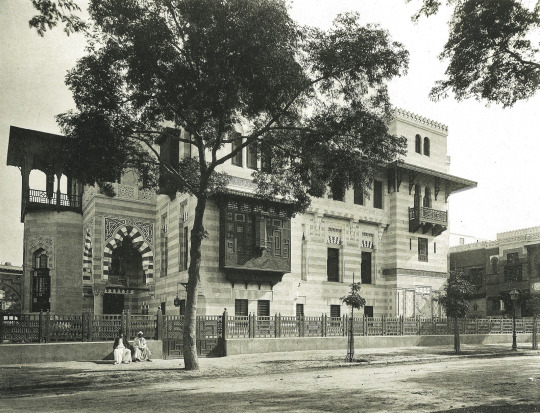
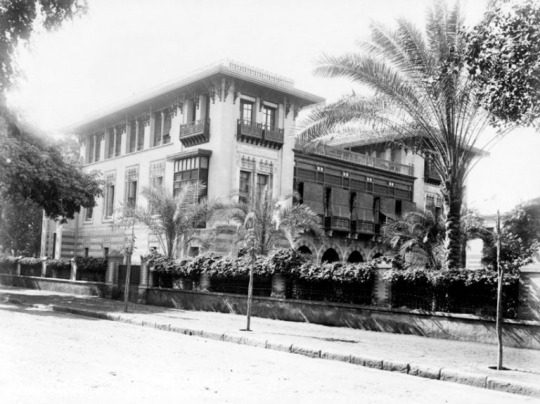
And here are some photos of Cairo in the 1800s:

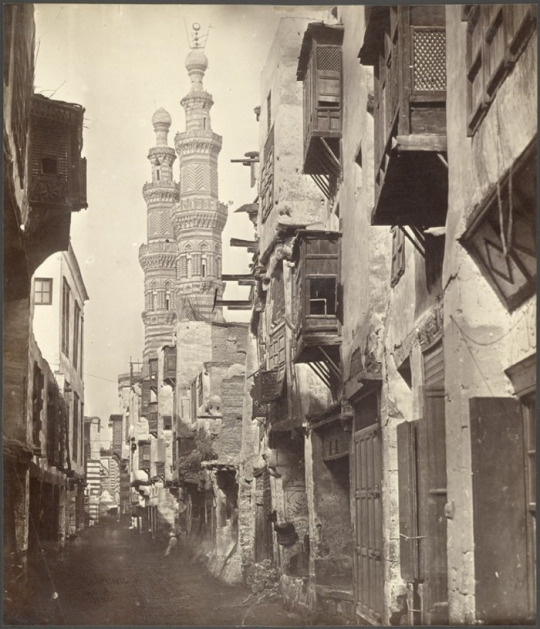
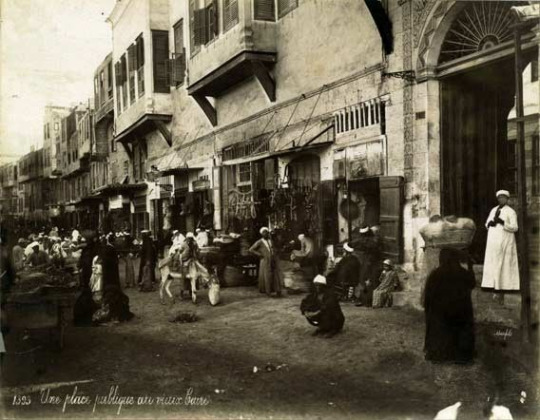
As you can see, not quite Vegas.
A fic set in Cairo can certainly still have the Cairo strip with all the casinos, since that’s an aspect of canon, but a place like that would probably be geared more to tourists and foreigners than locals. So long you’re aware of this while writing, and that Cairo would exist beyond it, you should be fine. It might also be worth having characters explore the actual city.
Weather:
The stereotype is that Egypt is just hot and sand year-round. It isn’t. The further south you go, the hotter it will get, so that Upper Egypt (which is in the south, yeah), is hotter than Lower Egypt, which is where Cairo and Alexandria are. Alexandria, by virtue of being on the Mediterranean, has fairly cold (for us) and rainy winters and mild, humid summers. Cairo gets very occasional rain and has harsher summers but is also dryer.
And, of course, a thing to remember is that even in the depths of the desert, the morning might be quite warm but the night will be quite cold as well.
Sandstorm season (called khamaseen) takes place from April - May but in the middle of Cairo it’s more of an annoyance than anything else.
Language:
Since they speak Arabic, it’s important to note that spoken Egyptian Arabic is very different from written Classical Arabic. Egyptian is a mishmash of Arabic, Coptic, a bit of Greek, and a bit of French (and, in the real world, some Turkish too) all smashed together. Accents differ from city to city, and Cairene Arabic is best known for the fact we pronounce the letter jeem as geem (so all soft Gs are turned into hard Gs) and tend to replace the letter qaf with a glottal stop.
This means that a Cairene wouldn’t be called Jamal, they’d be Gamal. A Cairene would pronounce burqa as bur’a.
Since religion plays a big part in language, RQG Egyptian Arabic may be a bit different. For instance, the greeting most people associate with Arabic is “Assalam alaykum” but that’s very specifically Muslim or at least associated with Islam, and might not have been as wide-spread given...y’know, that Islam doesn’t exist. I’m not saying it’s incorrect to use, just explaining the context.
Alternatives could include “Sabah/masa’ el-kheir” which means “Good morning/evening,” and “Naharak/Naharik saeed” which is, “May you have a good day.”
Fashion:
Although this didn’t really feature in RQG, I’ve received a lot of questions about the period’s fashion and honestly it’s my favourite thing ever so I probably would have touched on it anyway. I’ll only go into broad strokes, as there are plenty of regional variations and, again, I’m no expert
Women
Egyptian women covered their heads and sometimes their faces not out of religiosity but out of a cultural expectation of modesty. This may well have come about as a result of the Arab/Muslim cultural majority, as to my knowledge this wasn’t the case in the Greek and Roman periods, but women of all religions covered their heads so that would likely still be the case in RQG’s Arab Egypt.
This isn’t with the hijab we know today. It may have been a cloth or kerchief tied over their heads and then the melaya laf (which is larger cloth, almost a sheet) that they wrap around themselves and over their head, as follows:

The black face-covering was called a burqa or bur’a (not the same as a Muslim burqa, which serves similar modesty functions but is a separate thing) or a yashmak and may have been opaque black, white, or netted, such as in this picture:
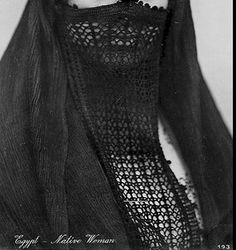
Underneath the melaya they would be wearing a long, loose, patterned dress:

Upper class Egyptian women tended to wear Western dresses with a white yashmak that covered their faces and heads. A yashmak is Turkish, however, and without Ottoman influence this style and name might not have caught on in Egypt.

Men
While the melaya laf and yashmak have disappeared from Egypt, the traditional men’s gallabeya and ammama, or turban, are still seen widely today. The gallabeya (or jellabiya, outside of Cairene Arabic) is a long, loose garment with wide sleeves and no collar. It’s in muted, neutral colours, usually lighter ones like white or beige in the summer and navy blue or grey in the winter. You’ll have seen examples of it in the pictures of Cairo above, and here’s another one:

Middle to upper class men and civil servants, however, tended to wear English suits with a tarboosh, or fez. Since fezzes were also a result of Ottoman rule, RQG Egyptians might not wear them.
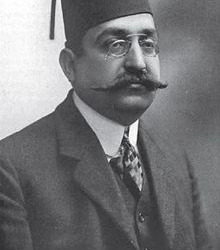
And yes, impressive moustaches were also very much the fashion.
Names:
The running joke is that Hamid’s name is unnecessarily long, but my name is longer, and I don’t think that’s particularly unusual. We don’t usually go around introducing ourselves with all of them, admittedly, and I’m not sure whether Hamid does this as a way to indicate he’s overly fancy or because Bryn doesn’t realise it, but four names is not long. My ID boasts five, and I know of at least one more.
Arabic naming conventions use patronymics for all children, regardless of gender. What this means is that my name and my brother’s name is identical except for our first.
Mine is Jasmine + Dad’s name + his dad’s name + his dad’s name + his dad’s name
And my brother is also First name + Dad’s name + his dad’s name + his dad’s name + his dad’s name.
Egyptians do not typically have last names, but an important family may all choose to identify under a name and use that as their last, such as the Tahans. In my case, I use my fifth name as my last name and introduce myself in everyday life as Jasmine Fifth Name. Notably, my brother does not, and goes by First name + Dad’s name instead. This isn’t unusual. On paperwork, however, we still have the same name.
Additionally, Egyptian women do not take their husbands’ last names in marriage, nor do children take any of her names.
I’m not sure why, according to the wiki, Hamid’s sisters seem to have taken their mother’s name. Following Arabic naming conventions, they would all be First Name Saleh Haroun al Tahan, and their father would be Saleh Haroun al Tahan. A possible workaround might be that halflings have their own naming conventions that mean daughters have matronymics and sons patronymics.
A note to podficcers: please google name pronunciations beforehand because Alex and Bryn’s are actually often wrong. Ishak, for instance, is not pronounced Ee-shak. It’s Iss-haaq or Iss-haa’, because of quirks of the Egyptian accent I mentioned earlier.
Part Two: Criticism
I understand it can be difficult to portray a country different from yours with accuracy. I understand the RQG crew will not have had the perspective on Egypt and Cairo that I do by virtue of living here. I do also acknowledge that I’m sure none of this was actively malicious or on purpose.
But it doesn’t have to be on purpose to hurt, frankly, and given how often the RQG crew have talked about their responsibility with a game that’s intended for an audience, I expected better. Bryn has spoken about not wanting to fall into stereotypes for Hamid and, to be fair, by being a non-religious fancyboy Hamid does neatly avoid the religious zealot and the noble (or ignoble) savage routes. Unfortunately, he falls into another, which was hammered home by the portrayal of Cairo and the Tahans as a whole.
Our first glimpse of Cairo, after the sandstorm clears, describes it as “basically Vegas,” with hotels and garish casinos catering to the rich all along the “Cairo strip.” From then on, our only other images of Cairo are vast estates and a pyramid in the desert.
The only named Egyptians we meet are the Tahan family, who are introduced through an absurdly lavish estate compared to the palace fortress of Alhambra, a gambling problem that apparently runs in the family, murder, and corruption, as the head of the family who has already covered up a crime for one son then turns himself in to protect the other.
Then, to top it all off, Hamid is apparently utterly incapable of understanding why letting his brother get away with murder is an issue until the paladins point it out.
Do you see the pattern, here?
I understand this was aiming to be a criticism of the rich and powerful, but the fact remains that the Tahans are the only representation of Egyptians we get. While this may not be harems and hand-chopping levels of Orientalism, the image presented is of Cairo as a den of excessive wealth and vice, and Egyptians as corrupt and immoral.
This isn’t new.
The Middle East and North Africa (as well as India and China and everywhere else considered “the Orient”) has often been tied to images of wealth and overt splendour, usually hand-in-hand with the Oriental despot and corruption. This view went beyond just fiction and influenced the policies with which we were ruled.
Cromer, Consul-General of Egypt, wrote books called Modern Egypt. He had this to say about us:
“The mind of the Oriental, on the other hand, like his picturesque streets, is eminently wanting in symmetry. His reasoning is of the most slipshod description. . . . They are often incapable of drawing the most obvious conclusions from any simple premises of which they may admit the truth.”
In his opinion, our inability to follow logical reason led to us being inherently untruthful and, therefore, immoral. Similarly, British statesman Balfour was of the belief that:
“Lord Cromer’s services during the past quarter of a century have raised Egypt from the lowest pitch of social and economic degradation until it now stands among Oriental nations, I believe, absolutely alone in its prosperity, financial and moral.”
Egypt was under British colonial rule from 1882 - 1952.
You can see, I hope, why a storyline focused on an Egyptian family’s corruption in an Egypt characterised almost entirely by its casinos and one lavish mansion was very uncomfortable. The fact Azu was one of the people trying to explain morality to Hamid keeps it from sliding into a clear East vs West dichotomy, but the fact remains this is a British show featuring British players and this is the story they chose to tell.
The rest was just salt in the wound, really.
I expect mispronounced names and pyramids and jokes about camels in most media, but rarely do the makers of said media then go on to pat themselves on the back for doing their “due diligence” on a metacast about sensitivity.
I see weird naming conventions and mispronounced names and “basically Vegas” and “crocodile steak” and “camel’s milk froyo” and I do not see due diligence.
I see a setting that barely looked past Cleopatra and I do not see due diligence.
I see a storyline that shows only excess and immorality and corruption and I do not see due diligence.
I see a disregard for me and mine, and I do not appreciate it.
Literature I’ve referred to in writing this criticism:
Orientalism (1978), by Edward W. Said
Orientalism in the Victorian Era (2017), a paper by Valerie Kennedy
Orientalism in American Cinema: Providing an Historical and Geographical Context for PostColonial Theory (2010), a thesis by Samuel Scurry
Popular Culture, Orientalism, and Edward Said (2012), an article by Robert Irwin
#rusty quill gaming#rqg#hamid saleh haroun al tahan#resource#criticism#orientalism#representation#long post
1K notes
·
View notes
Note
Inspired by the last ask: how are your places (i.e noble titles, residences, locations, etc) named? I love your story by the way 💕!
Hmmm for locations, it’s usually random and sometimes they are places that already existed in real life (eg. Wellingtton). Like Ahtolia is actually Ahtohallan from Frozen 2 which I changed the spelling lol. And Arlanta is actually a place in one of the books I’ve been reading. The same goes for Cordelia. The original name is Obelia but I changed it to Cordelia for this story 😂
Most of the times the places and noble titles are random and if I ran out of ideas, I use a generator 😂
As for residences, there are two residences that their names I came up with by myself. The Gale House and The Wind Palace. Gale means “strong wind” and The Wind Palace is self-explanatory.
I imagine Windasia to be a windy place and it’s also vaguely based by one of the states in my country; Sabah. Sabah is said to be the “Land Below The Wind” and I reaaaally love Sabah. Even the location of The Wind Palace is where I expect it to be the windiest geographically (it’s located in Brindleton Bay at the 64x64 lot beside the sea).
And thank you so much for reading my story!!! 🥰️
6 notes
·
View notes
Text
Splendid Shangri-La Rasa Ria Kota Kinabalu
Splendid Shangri-La Rasa Ria Kota Kinabalu
Story and photos by Dr. Michael Lim The Travelling Gourmet TM Copyright all rights reserved The indomitable and irrepressible Travelling Gourmet TM jets to Sabah, the Land below the Wind to experience a… MARVELLOUS paradise in the Shangri-La Rasa Ria beach resort at Dalit Bay. Arguably the best beach resort in Sabah, the beach is 3km long! It is best to stay in the Ocean Wing with its own pool…

View On WordPress
#Canopy Walk#Dalit Bay#Dr. Michael Lim is The Travelling Gourmet TM#Eggs Florentine#Kam Heong Chicken#Nature Reserve#Oceano#Roast Duck#Sabah#Shangri-La Ras Ria Kota Kinabalu#The Eighth
0 notes
Text
The murmurs beneath the ‘Land Below the Wind’! Mission Sabah: The ManhuntV.G. Kumar Das It used to be that Sabah was one of Malaysia’s high income earning states. In the late 60s, Sabah was poised to go places. Then the vultures moved in …..First, they reaped the land of its natural resources. Then they divided the lands and sealed their dominance through the ballot box. Readers well-versed…

View On WordPress
0 notes
Text
The Tip Of Borneo, Sabah
The Tip Of Borneo, Sabah
31 October 2019 – More adventures on our second day in the “Land Below the Wind” (because of its location just south of the typhoon-prone region around the Philippines). We had our breakfast at 6.30 am and left immediately as we decided to ride to the Tip of Borneo, about 190 km from the hotel. We filled up the petrol to the maximum. Riding at a cruising speed between 50 km to 100 km accordingly…

View On WordPress
#coupletrip#exploretodiscoverlife#Exploring Malaysia#Fly & Ride#jailani#jailanimahmood#Kota Kinabalu#pactrex#Sabah#The Tip of Borneo
0 notes
Photo

Dear family and friends,
Its been over 40 years since I began my professional career as an artist.
To celebrate this, I am holding my Retrospective Art Exhibition at the Sabah Art Gallery, Kota Kinabalu MY beginning Saturday, 27th November 2021 until Thursday, 27th January 2022.
This 2 month exhibition showcases over 100 artworks comprising artworks on loan from collectors, artworks from my own collection and even some artworks from my school days!
I am also displaying some books in which my artworks have been featured and also some certificates, brochures and cards too!
If you do visit the land below the wind in the near future, please drop by the Sabah Art Gallery to peruse my artistic journey.
I hope to post some photos of my exhibition soon on my Instagram/Facebook so please follow me @christiannegoonting.
Thank you!
Sincerely, Tianne
0 notes
Text
바람 아래의 땅
인도네시아의 사바, 사라왁 주를 소재로 한 작품. 사바가 사라왁에게 꽃을 건네고 있다. 인도네시아의 영토는 말레이 반도와 보르네오 섬에 나눠져서 있는데 사바와 사라왁은 보르네오 섬에 있다. 원제는 '바람 아래의 땅 (Lands below the wind)'으로, 사바 주의 별명(Sabah, negeri di bawah bayu)이다.
유사 작품. 사바의 대나무 춤을 소재로 한 작품이다. 원래 전사들이 자신의 힘을 과시하기 위해 추는 춤이라고. (아래)
youtube
또 다른 유사 작품. 보르네오 섬 이반족의 전통 춤 Ngajat을 소재로 했다. 이반족은 브루나이와 사라왁에 걸쳐서 살기 때문에 사라왁 주로 묘사된 것 같다. (아래)
youtube
0 notes
Text

I posted 18 times in 2022
13 posts created (72%)
5 posts reblogged (28%)
Blogs I reblogged the most:
@skyfelzz
@sunnydrop-where-he-shouldnt-be
@lovingtheanimal
I tagged 15 of my posts in 2022
Only 17% of my posts had no tags
#my art - 5 posts
#art - 5 posts
#fanart - 5 posts
#no straight roads - 4 posts
#nsr - 4 posts
#nsr fanart - 4 posts
#drawing - 4 posts
#illustration - 4 posts
#artwork - 4 posts
#flintsky speaks - 4 posts
Longest Tag: 136 characters
#currently i have done 2 pairs but i still can't figure out how to thumb since i still need the empty space inside the hand to slot em in
My Top Posts in 2022:
#5
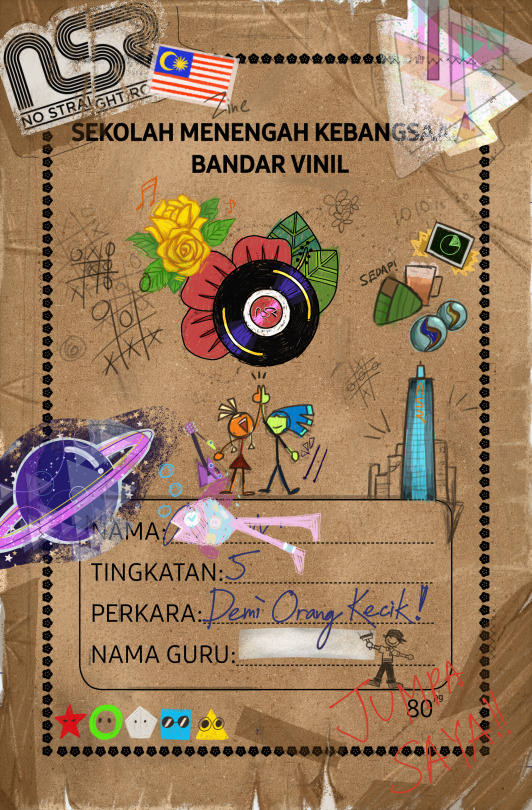
📕 School Exercise Book 📕
📕 Buku Latihan Sekolah 📕 📕 学校练习簿 📕
This is the 1st out of my 3 zine pieces!
Check out the zine here: https://nsrmalaysiazine.carrd.co/
HAPPY 2ND ANNIVESARRY NSR!! Man i should have posted this a longgg time ago but i figured this would be the perfect time to post the 3 pieces I contributed for the NSR Malaysian Zine as well since it's also almost our Independence day
Halfway through the zine I was promoted as a UI/UX mod for the zine, so yes, I made the zine carrd site! :P (with the help and guidance of @softlight289 and some feedbacks) Might not look too nice compared to other sites but hey, I learned quite a lot of stuff and gained lotsa experience from being a mini-mod for the zine! >:D These will be separated posts cuz I have a LOT to talk about
Image description under the cut! :D
This used to be one of my cover art submissions that didn't get chosen, but decided to finish it anyway cuz why not :P Was looking back at my old exercise books that I doodled on and decided "why not" and made this piece XD I still doodle on em til this day, in a seperate exercise book of my own ofc haha
I gotta be very honest here, I don't have stickers and color pencils on my books, I only have stickmen and poor left-hand writing attempts. This book belongs to who? Up for yall to decide cuz honestly: it could be anyone >:)
I almost forgot to draw Sayu lol
26 notes - Posted August 28, 2022
#4
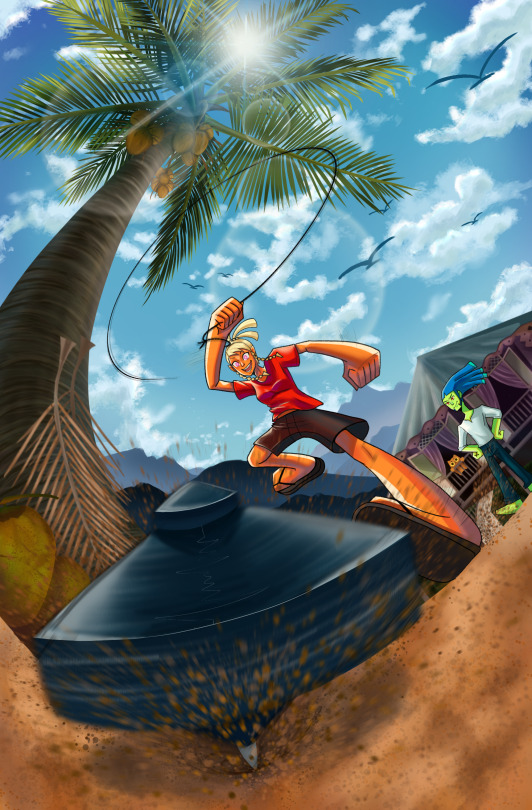
🌀 Gasing Under the Daylight 🌀
🌀 Gasing di Pancaran Matahari 🌀 🌀 在阳光下转陀螺 🌀
This is the 3rd out of my 3 zine pieces for the NSR Malaysian Zine!
As you can see, the titles kinda sucked since i have 0 idea how to title this piece
Check out the zine here: https://nsrmalaysiazine.carrd.co/
Image description under the cut! :D
Fun facts:
I mashed up both the timelapse of the original lost file and the timelapse for the redraw
This piece got like, 2 redraws, one is because of a file lost after updated Ibis, while the other is because I'm unhappy with the perspective and decided to redraw it
The coconut tree got the highest amount of redraws and it gets more and more realistic for each redraw.
The final thumbnail for this was made in my English module after I have finished all my work given by teacher
The house is from @softlight289 jetty piece >:)
yes as you can see the timelapse i struggled with the clouds so fren sent a ref and it helped me immensely
To be honest, this piece is kinda random, but my brain reminded me that I can't play the gasing and I want to deliver something cool so BOOM this piece is born XD
Good for Mayday for spinning the gasing successfully because until today I still can't spin the gasing properly for my life :')
37 notes - Posted August 28, 2022
#3

🌾Sabah, Land Below The Wind💨
🌾 Sabah, Negeri di Bawah Bayu 💨
🌾 风下之乡,沙巴 💨
This is the 2nd out of my 3 zine pieces for the NSR Malaysian Zine!
Check out the zine here: https://nsrmalaysiazine.carrd.co/
Image description under the cut! :D
I wanted to make an entire piece dedicated to my hometown Sabah, initially, I plan to go for the poker card style since ppl like to play cards during CNY but I can't work that out so it ended up being styled like a tarot card instead :P
As a Sino-Kadazan that grew up in West Malaysia, I only got to learn Chinese culture and missed the Kadazan part of my culture entirely. So now I'm trying to go back to my Kadazan roots by learning the language and culture after I graduated high school because by that time I will be able to go back to Sabah for a long while and slowly rediscover the other half of my missing culture >:)
I really want to make a piece to represent a part of what I personally know about Sabah and its culture since East Malaysia is often overshadowed by a lot of other stuff, and I decided to dedicate an entire piece just for Sabah, and this is why this piece means a lot to me.
In this piece, you can see Mount Kinabalu, the Sabah State Museum, The Tip of Borneo, Rafflesia, Nepenthes rajah, and the Kadazan culture with the patterns and also Mayday doing the Sumazau dance.
59 notes - Posted August 28, 2022
#2
For my school's Maths room deco :P
Drawn on a broken mini table with paint markers
After 4 months I can finally announce that I've been dragged to submas and pokemon in general, I blame my twt moots /hj

106 notes - Posted August 29, 2022
My #1 post of 2022
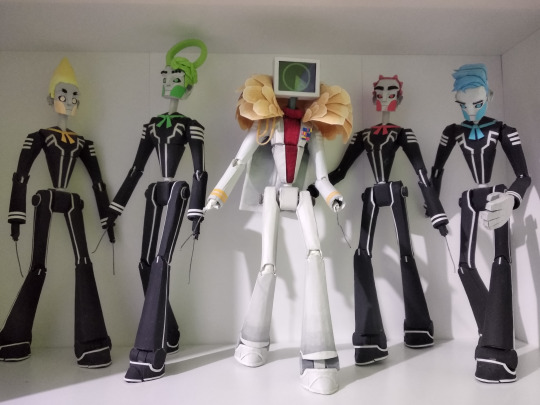
i don't think I post this here before, here's an update of the Neon J and 1010 cardboard figurines >:D
oh for the peeps who waited for over a year for this, sorry for the lack of updates skdjvbjbf-
254 notes - Posted February 6, 2022
Get your Tumblr 2022 Year in Review →
1 note
·
View note
Text




Huminodun (Mimpi Act 2), 2018
// Tandak Mengalai, KLDiversecity
Showcase : Tandak Mengalai - The Exquisite Dances of Sabah and Sarawak (7 - 9 September 2018)
Medium : Video - 📽️
Tools of trade : AE
Worked from dance capture session, keying in AE to visualising the narrative imagery as visual for Mimpi Act 2 in Tandak Mengalai musical theatre performance. Huminodun (definition : “to sacrifice”), is a legend from The Land Below the Wind - Sabah, the daughter of Dewa Kinorohingan and Umunsumundu who has sacrificed herself for the fertility of the land to save humankind. I specifically have chosen rafflesia (which is also the state's official flower) as a symbolisation of karmic life, embodied by Fiza Thomas (the actress who played as Huminodun). An artistic collaboration with choreographer and contemporary dance lecturer, Faillul Adam.
More on the event here.
0 notes
Photo

Holiday in Sabah or get an iPhone 12? ⬇️⬇️⬇️ Or why not get both? Join our #RinduSabah contest now and stand a chance to be in the running to win amazing prizes! As we understand many of us are missing the Land Below the Wind, we hope you can reminisce your Sabah moments via this contest! This contest is specially focussing on Instagram platform so start digging your favourite pictures and videos from your previous trip to Sabah and submit them now! So visit @gayatravel or @sabahtourism IG/website now to get more information. Photos and videos must be yours! Terms and conditions apply. #SeetheWorld #GayaTravel #SabahOKbah #SeaYouInSabah #Sabah #Malaysia #COVID19 #dreamnowtravellater #travellater (at Tawau Hills National Park) https://www.instagram.com/p/CJ_Ez7oH-gy/?igshid=1b05eaz6sv64v
#rindusabah#seetheworld#gayatravel#sabahokbah#seayouinsabah#sabah#malaysia#covid19#dreamnowtravellater#travellater
0 notes
Photo

💙 // What is your story about Sabah? // 💙 • • • 💙 Sabah, the land below the wind, is rich with history, photographic nature sceneries and exotic cultures that a single lifetime may not be enough to discover every single part of it! 📚✈️🚢🗺🏔🏗🛤🍉 • • • 💙 Here are 3 harmonious key reasons why many tourists visit Sabah; 🦋 (Do) Sabah is rich with fresh seafood at reasonable prices and a variety of cooking styles for EVERY TYPE of seafood! 🍤🍍🐠🦞🦀🐙 🦋 (Mi) Sabah STILL has greeneries and wildlife sanctuaries to protect endangered animals from extinction 🦧🐘🦛🦍🐢🦅🦉🦇🐒🐸 🦋 (So) Sabah has many beautiful sceneries of hills, mountains and seasides if you plan to go on a country road trip! 😉🤣🚢🏔🗺🛤✈️🕶🥾 • • • 💙 I love discovering these stories from tourists themselves when I ask them about Sabah, for they are willing to travel all the way to explore something new. 🥰📖 • • • 💙 Food for thought: 💡 Tag a person who has visited Sabah! 💡 How did you spend your time in Sabah? • I love writing stories because I love hearing yours! 💖 Keep sharing! 💚 • • • 💙 Faith Words: [James 3:17 ] “But the wisdom from above is first pure [morally and spiritually undefiled], then peace-loving [courteous, considerate], gentle, reasonable [and willing to listen], full of compassion and good fruits. It is unwavering, without [self-righteous] hypocrisy [and self-serving guile].” • • • 💙 A Raspberry’s Takeaway: ⭐️ 🌟 If you are interested to #EducateJessandra , just contact me and I will be happy to collaborate! 😜 That way, we get to learn from you (your working life), me (my musical journey) and also from the community (everyone else’s job is equally important and is able to contribute back to society)! 🌟 💡 Discover Sabah : @sabahtourism , @sabahtravel and @amazingborneo . ✈️ Sabah Cuisines : @foodpsabah and @sabahfoodparadise . 👨⚕️ Self-Care Art : @child.ink and @bw_illustrations 🎵 Waltz of Fruits 🍇 💃🏽 : @tchaikovskyofficial @cedricgrolet @musicforyouth • • • #novemberraspberry #education #community #music #classicalmusic #learn #research #blog #contentcreator #faithblog #christian #christianblog #love #hope #peace #sabah #art #food #life (at Sandakan,Sabah) https://www.instagram.com/p/CFtN3WkpD1Q/?igshid=as92uc65j9b8
#educatejessandra#novemberraspberry#education#community#music#classicalmusic#learn#research#blog#contentcreator#faithblog#christian#christianblog#love#hope#peace#sabah#art#food#life
0 notes
Photo

THE WONDERS OF SABAH BORNEO
SABAH known as the land below the wind, lies on the island of Borneo, sharing the island with Sarawak, Brunei and Kalimantan Inonesia. Interestingly, the word, “SABAH” in Malay means patience and these two monikers are quite suitable for the atmospheric peace and tranquility of the landscape, made up of rainforests, mountains and pristine coats formed over eons. Sabah is richly blessed with nature diversity, unique cultures, fun adventure, beautiful beaches, and fantastic cuisines for the adventurous taste buds. We have it all, from the world’s largest flower - the Rafflesia, one of the highest mountains in South East Asia - Mount Kinabalu, to one of the world’s top dive sites - Sipadan Island. Sabah is also known for her great natural treasures which include the world-renowned Danum Valley Conservation Area and Tabin which is Sabah’s largest wildlife reserve. Once known as North Borneo, Sabah was under the British colony during the late 19th century till the early 20th century. Sabah gained self-government on the 31st of August, 1963. Sabah, together with Malaya, Singapore and Sarawak formed the Federation of Malaysia on the 16th of September 1963.

ETHNIC GROUP IN SABAH
There are approximately 32 different indigenous ethnic groups in Sabah, including sub ethnic groups of the main tribes, the Kadazan Dusun, Rungus, Murut and Bajau people. These main tribes, with their different customs and traditions hand down the craft of weaving, bead work, jewelry and decoration, reflected in their beautiful costumes, from generation to generation. Once Animist, today, the Kadazan Dusun (traditionally rice cultivators), Rungus and Murut, (meaning hill people) are mostly Christian and the Bajau(traditionally known as horsemen of the East) are Muslim. The population of Sabah is also made up of Chinese and Bruneian Malay. Many festivals are celebrated in Sabah, one of which is Pesta Kaamantan. This festival gives thank to the sacrifice of the creator Kinoigan whose only daughter Humindoun was sacrificed so the people would not want for food.

CAPITAL OF SABAH
The capital of Sabah is Kota Kinabalu. The name is devired from the nearly Mount Kinabalu. The city of Kota Kinabalu is an excellent hub for travelers on their way to discovering the islands Tunku Abdul Rahman National Park and the multitude of other natural attractions in this state. In the city, there are so many interesting places such as entertainment venues, watering holes and a food market where one may be charmed by the experience of mingling with local cultures who serve up freshly barbequed seafood. The nearby local shopping market also offers a great variety of handicrafts and jewelry made from pearl and shell.

NATIONAL PARK
There are plenty of protected parks in Sabah such as lying opposite Kota Kinabalu is the Tunku Abdul Rahman National Parks, comprisieng of five Islands: Gaya, Manukan ,Sapi , Suluk and Mamutik. They form a popular destination for many locals and visitors for water sports, scuba diving and other interesting activities. Others parks of interest include Turtle Islands Park, Pulau Tiga Park and Crocker Range Park.
2 notes
·
View notes
Photo

Safely arrive in Kota Kinabalu International Airport! I'm excited to finally set foot in Sabah, Land Below the Wind. #excited #finally #wanderlust (at Kota Kinabalu International Airport)
1 note
·
View note



